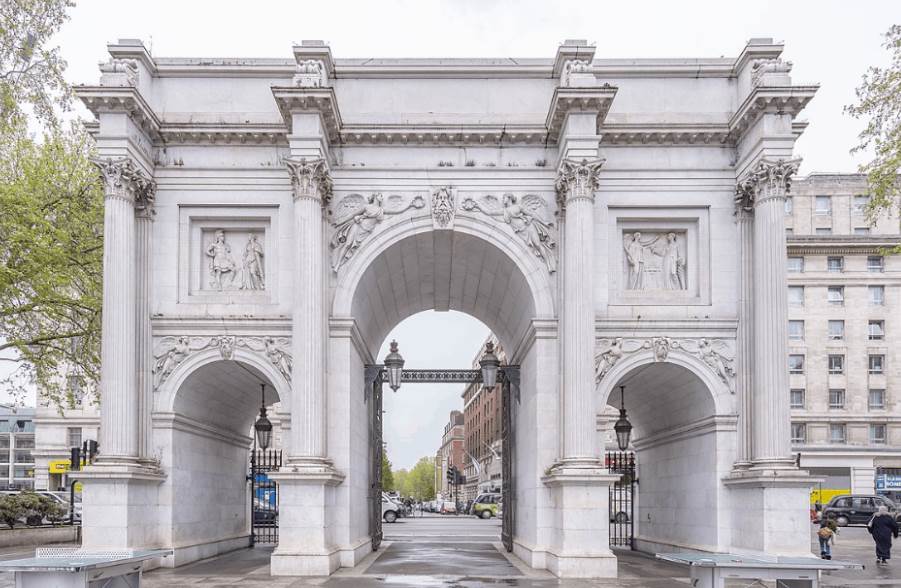Did you know there used to be a triumphal arch in front of Buckingham Palace until halfway through the 19th century?
In this post, you’ll discover the ultimate list of Marble Arch facts, a popular landmark in London.
1. It was designed by a prominent British architect
Marble Arch was commissioned by King George IV halfway through the 1820s. The commission for this massive arch in London was given to one of the most renowned architects of the Regency and Georgian eras, John Nash (1752-1835).
Nash is best known for his work on the Royal Pavilion in Brighton and Buckingham Palace. He was famous for shaping numerous areas in London in neoclassical and picturesque styles.
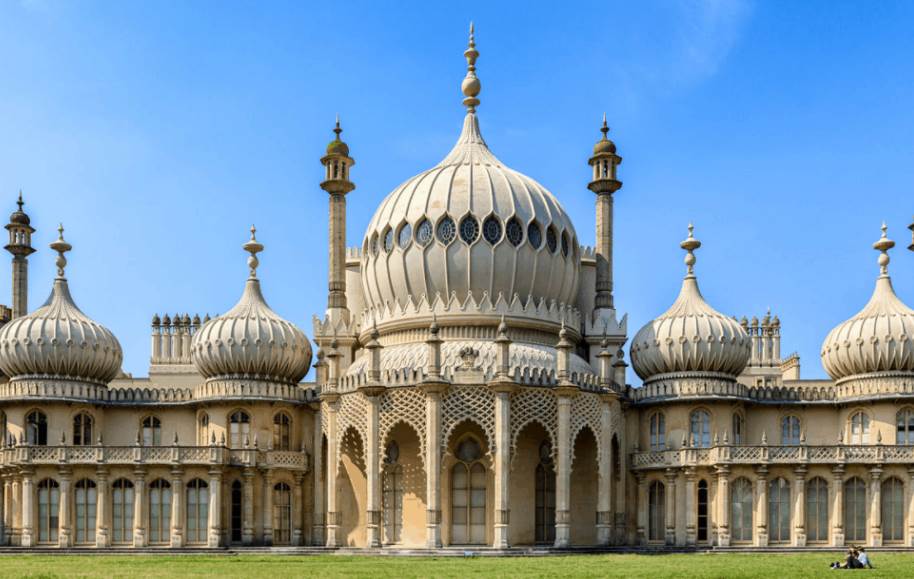
2. It was based on other famous triumphal arches
Nash didn’t have to look far to get inspiration for Marble Arch because just across the pond, a lot of triumphal arches were constructed over the centuries, especially in Paris and Rome.
Marble Arch was mainly based on the Arc de Triomphe in Paris, probably the most famous triumphal arch in the world, which was in return inspired by the Arch of Constantine in Rome.

3. It was commissioned to serve as the entrance for a famous courtyard
It was constructed to serve as the entrance of the “cour d’honneur” of Buckingham Palace. The palace was used as the main royal residence since the year 1837.
That’s right, Marble Arch stood right in front of one of the most famous palaces in the world and only members of the royal family and their entourage can pass through it as part of ceremonial processions.
That’s kinda why the Romans built triumphal arches in the first place!
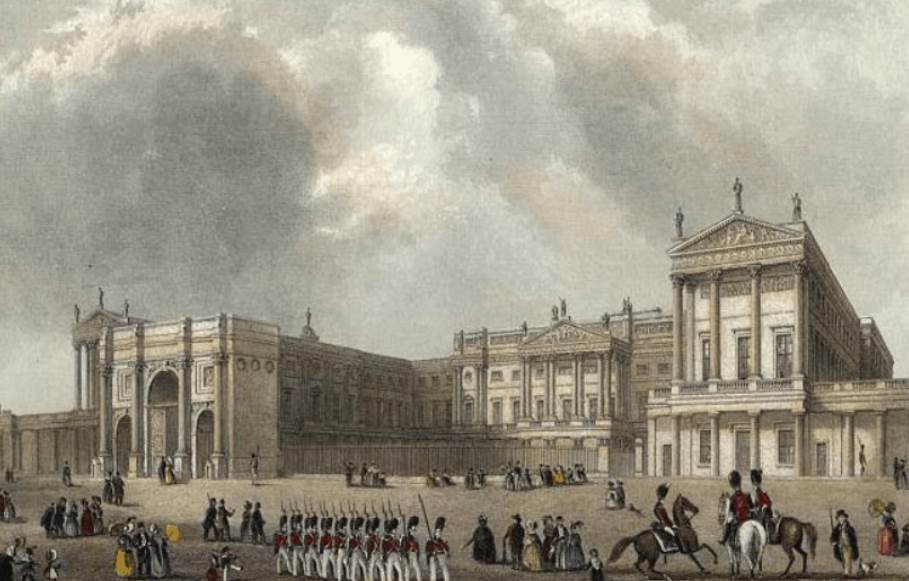
4. It took 6 years to complete Marble Arch
Construction of the arch started in 1827 but was halted because King George IV died in the year 1830. It wasn’t until the year 1832 that things finally moved forward again.
Marble Arch was built with Carrara marble extracted from quarries in Tuscany, Italy, which is obviously how it got its name. It was completed in the year 1833.
5. The original design was a lot more grandiose
King George IV didn’t care too much about the rising cost of the arch, as long as it added to the glory of the monarchy. The original plans included a huge bronze statue of the king to be placed on top of the arch, as well as numerous decorations.
The new King, William IV, was a bit more greedy and didn’t want to spend a lot of money on the monument, which is the reason the work was delayed for a couple of years.
The new architect, Edward Blore, reduced the design of John Nash by removing the entire attic of the arch and most of its decorations. When the construction cost was low enough, King William finally gave the sign to continue the work.
The completed arch stands 45 feet (14 meters) tall and measures 60 by 30 feet (18.3 by 9.1 meters) east-west by north-south.

6. The planned statues and decorations were used in other locations
Several of the decorations and statues were already commissioned when King William IV decided to cut the cost, so these couldn’t be used on the arch. Instead, all of these were used in other locations:
- Westmacott’s frieze of Waterloo and the Nelson panels – Used at Buckingham Palace.
- Victory statues and Rossi’s relief of Europe and Asia – Used at the National gallery.
- Equestrian statue of George IV – Installed on a pedestal on Trafalgar Square.
The statue created by Sir Francis Chantrey in 1828 was finally unveiled on Trafalgar Square in 1843 and still stands in its original location.
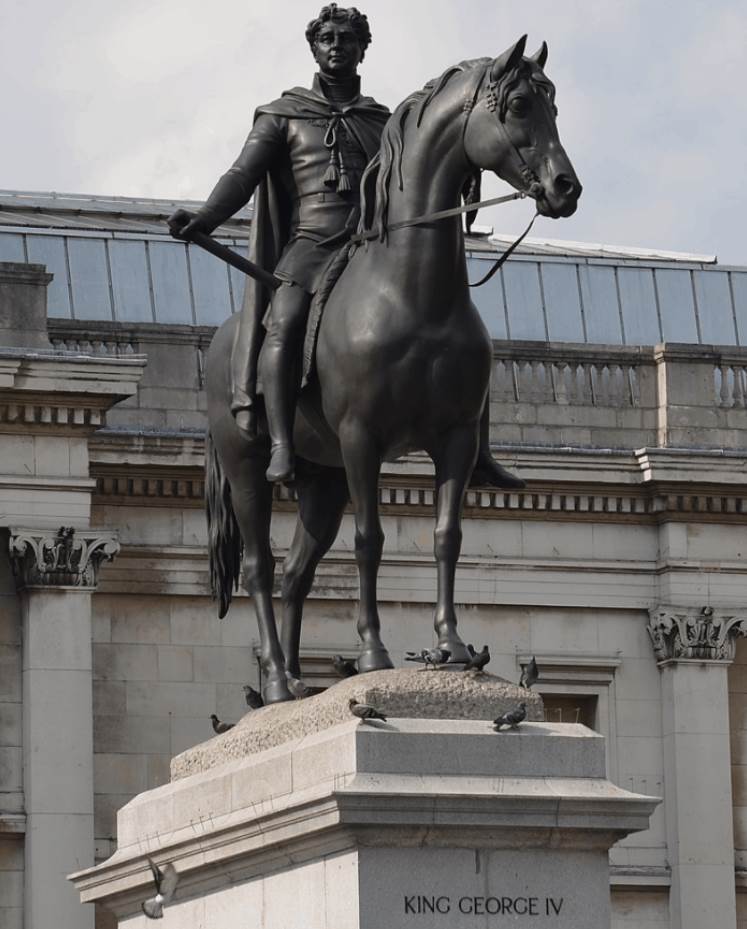
7. Marble Arch was relocated in 1851
Another one of those remarkable Marble Arch facts is that it was completely relocated less than 2 decades after it was completed. The reason is that Buckingham Palace was being expanded.
Just 10 years after Queen Victoria had decided to move into Buckingham Palace, it was deemed too small for the royal household and its entire entourage. Therefore, the east wing was constructed to enclose the main courtyard.
That’s exactly the location where Marble Arch was originally located and which now serves as the main façade with the famous balcony of Buckingham Palace.
The arch was dismantled the moment construction on Buckingham Palace began in 1847 and moved to the northeast corner of Hyde Park at Cumberland Gate. The move was completed in March of the year 1851.
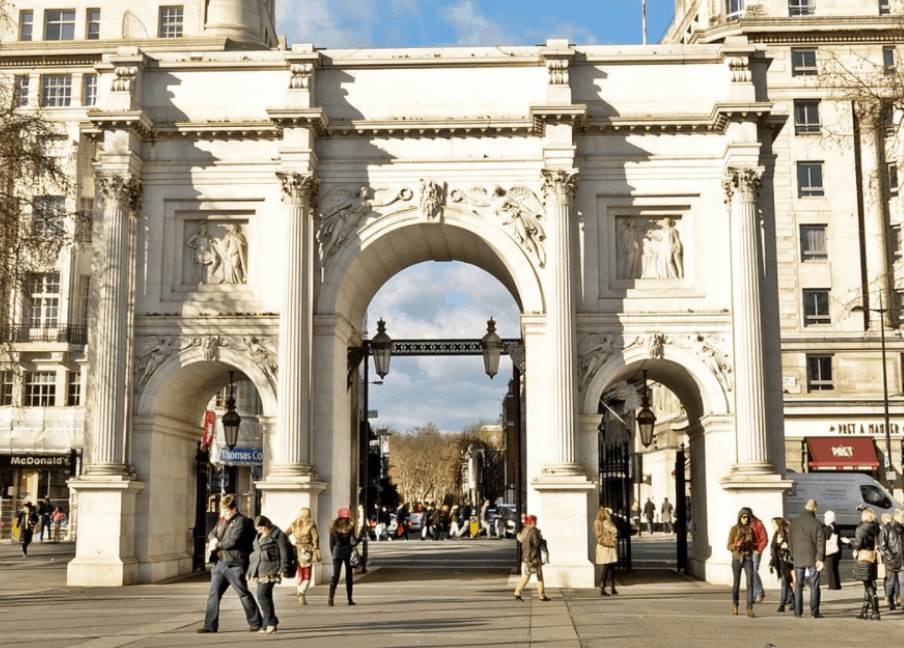
8. The Arch used to serve as a police station until the 1960s
The moment the arch was completed in the year 1851, it served a completely different purpose than a triumphal entrance to Buckingham Palace.
3 small rooms in the arch served as a police station from 1851 until at least 1967 when it was mentioned in a documentary as a “fully operational police station.”
King George IV would have never believed that his monumental arch would be turned into a police station, don’t you think?
9. It suddenly found itself on a traffic island in the early 1960s
In the late 1950s, a plan was created to widen Park Lane. This meant, however, that marble Arch suddenly found itself in the middle of a traffic island halfway through the 1960s.
The traffic island was completed with nice gardens so the area looks quite nice now.
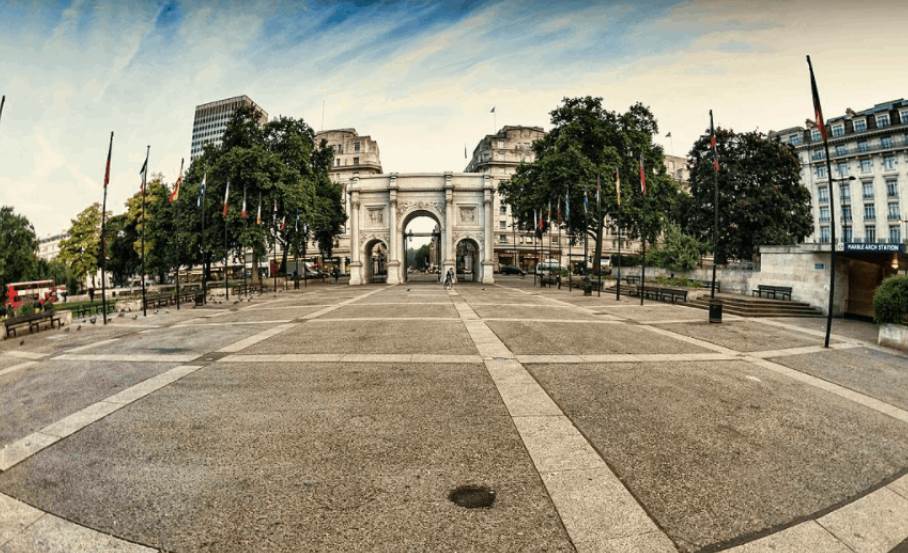
10. The arch has been accompanied by a horse’s head since 2011
Ever since 2011, the arch hasn’t been lonely on its traffic island. It has been joined by the bronze sculpture of a horse’s head called “Still Water.”
The sculpture was created by British sculptor Nic Fiddian-Green and stands about 33 feet (10 meters tall).

11. A tube station was named after Marble Arch
Marble Arch isn’t just a fascinating landmark in London, it’s also a monument that gave the name to the entire neighborhood it’s located in.
It also gave the name to the London Underground Station “Marble Arch” which is located on the Central Line.
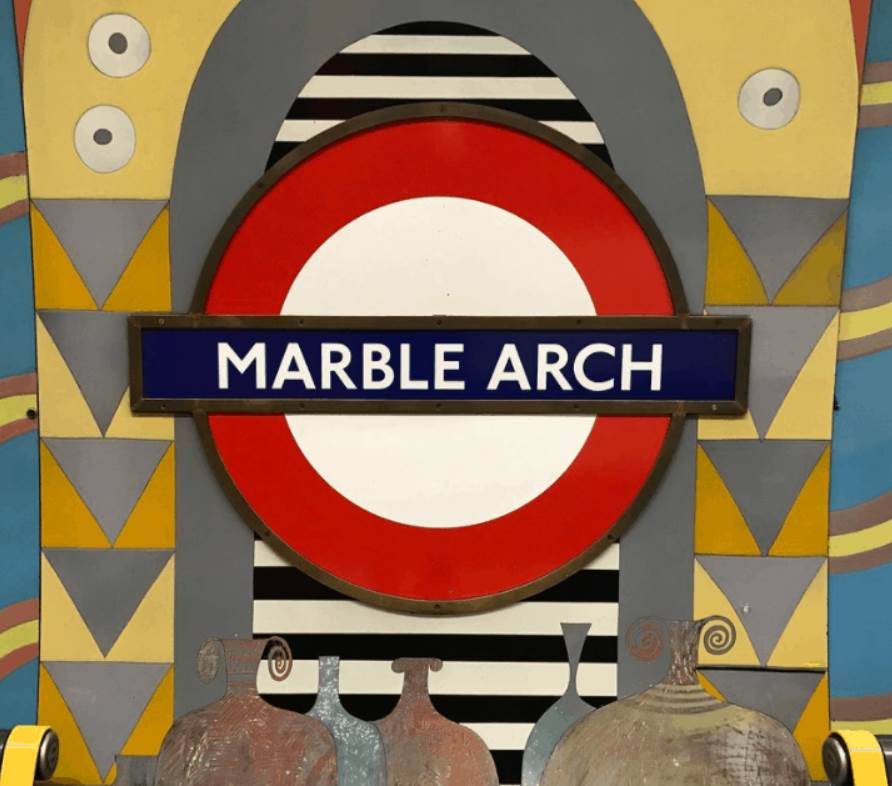
12. The area that Marble Arch is located has a dark past
While the area that the arch is located in looks very nice today, it used to be the scene of countless horrific events. That’s because the arch is located in an area that used to be called Tyburn, the main place where public executions took place.
From 1196 until the year 1753, hundreds of convicted criminals have been executed here, and Tyburn was associated with capital punishment for numerous centuries.
